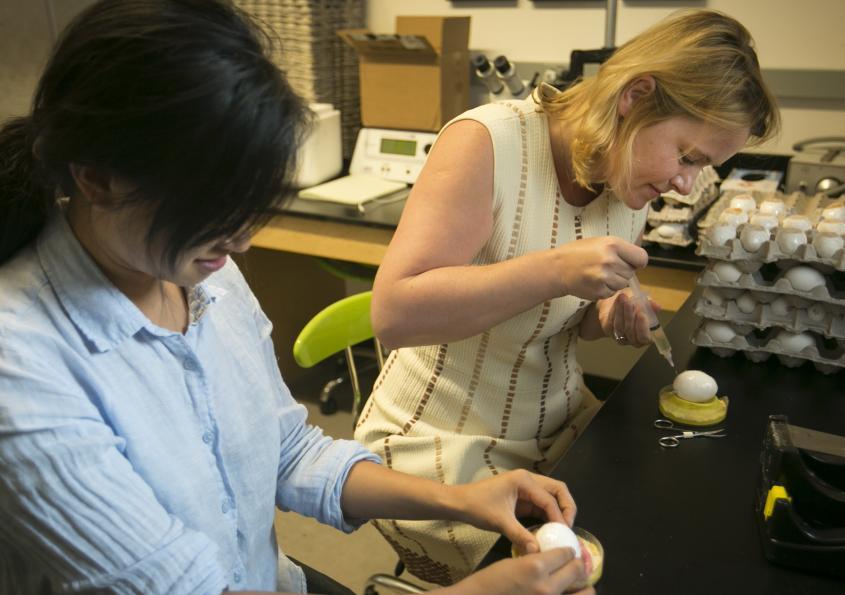Natasza A. Kurpios receives $2M NIH grant for gut lymphatics research
In embryos the midgut is the area from which most of the intestines develop. During development, it rotates in a complex pattern to assume its position within the body cavity.
Natasza A. Kurpios, Molecular Medicine, has worked to establish the molecular mechanisms that drive this rotation. Her team has shown that the same mechanisms involved in rotation also pattern the complex network of blood and lymphatic vessels that supply and drain the vertebrate gut. With one core molecular repertoire, the developing gut assumes early structural, molecular, and vascular asymmetries that determine the form and function of the adult organ.
Kurpios is now zooming in to understand the mechanistic development of the gut’s lymphatic network—vessels key to the immune and circulatory systems of the body. Gut lymphatics play a crucial role in absorption of dietary lipids, a function that separates them from all other lymphatic networks. Kurpios has found that the formation of gut lymphatics depends on the assembly of the network of arteries in and around the gut, but the specific mechanisms of this relationship remain unclear. Kurpios’ team is working specifically to understand the expression, timing, and the precise functions of Pitx2, a transcription factor, and another signaling pathway that affect the patterning and physiology of both the gut’s arteries and lymphatics.
Lessons learned will change the way researchers consider and study lymphatics of the mammalian intestine and will shed new light on potential targets of local lymphatics in diseases of the gut.
NIH Award Number: 1R01DK107634-01A1
This article originally appeared on the Cornell Research website.





